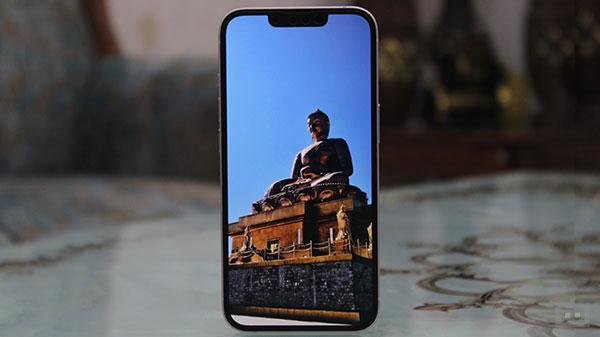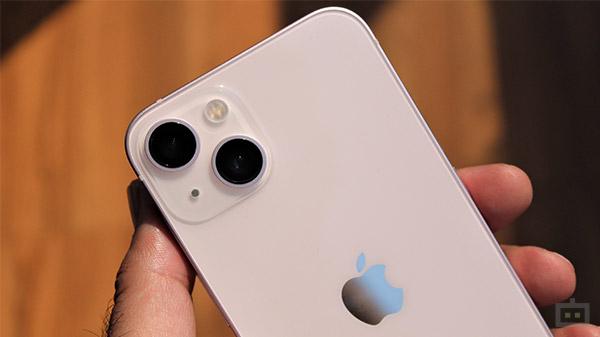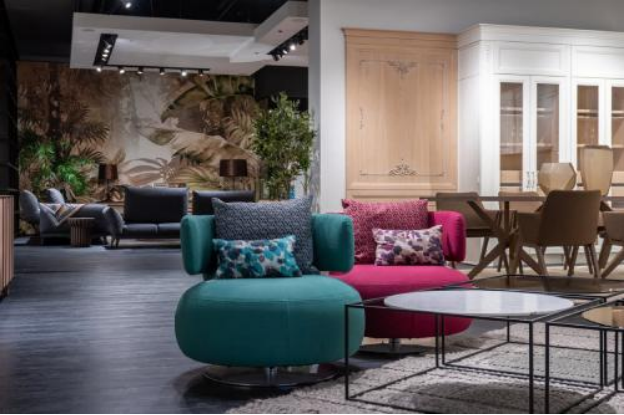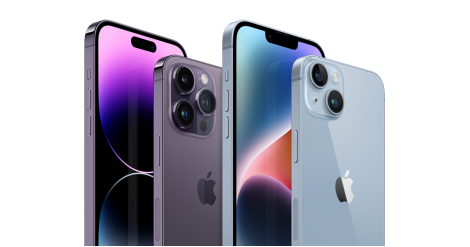Apple iPhone 13 Review From A Long-Term Android User: Should You Make The Switch?
I have used Android devices for the most part of the smartphone evolution. For a brief time, I switched to the Apple ecosystem but then gave up on iPhones (iPhone 4s, 6s, and 7) for good in 2017, simply because the Apple handsets felt restricted. Apple played too safe and in many ways and started losing the battle to Android rivals. Android devices kept getting better with time and offered more value for your investment.
Rating: 4.0/5 PROSCONSYou take any value-flagship or premium Android device launched in the last two years and compare it with the latest generation iPhone 13, you will notice the difference.
However, things have changed or starting to change with the latest generation of iPhones. The one we are reviewing today- the iPhone 13 isn't quite thin on features as a whole package. It gets some sought-after camera features, bigger storage, smaller notch, and improved battery life at the launch price of its predecessor, i.e. iPhone 12.
Now, most of these features will probably not make much of a difference for an iPhone 12 user; however, if you are using an older generation iPhone, per se iPhone XR, iPhone 11 or planning to switch from Android, you are in for some surprises and some disappointments. So, should you make the switch? I try to answer such questions in the following review.
Apple leaves us with no complaints on the quality part so I am going to focus primarily on the ergonomics and usability. Right out-of-the-box you will feel that the iPhone 13 is very sleek (7.7mm) and lightweight (174g). It has just the right amount of heft to it and a display size and proportions that serve wonderfully for most smartphone-related tasks. Unlike most Android devices, the iPhone 13's 6.1-inch screen is a tad wider.
The flat display comes with some extra millimeters of width reminded me of the Google Pixel 3XL's front fascia. It seems both Google and Apple have a somewhat similar sense of aesthetics when it comes to designing the handsets. To be honest, this particular display size is more suitable and handy than those taller aspect ratio handsets. You will have to put less effort into reaching the extreme corners of the screen thus reducing hand fatigue in daily use.
Easier To Use With One Hand
That said, the iPhone 13 rests comfortably in the palm and offers an excellent grip. The flat frame and the flat front work in the favor of the handset. The buttons are also thoughtfully placed for added convenience. If you still find a 6.1-inch screen bigger for your liking, the 13 Mini will serve you better.
iPhone 12 Vs iPhone 13 Design- Cosmetic Changes
If you are wondering what's new in the iPhone 13's design, the notch is now smaller and the phone is a bit heavier (by 10g) than its predecessor. The camera placement has also been tweaked slightly with new and bigger sensors placed diagonally.
And there's a new color- the Pink that we got to review flaunting a very light shade of pink that looks very elegant. Even the aluminum frame has a pink hue but with a premium matte finish. The overall design is very minimal and beautiful.
And while I liked the flat and wider display form factor, Apple should do something about the thick black bezels. They are very much noticeable and give a dated feel to the gorgeous front fascia of the new iPhones.
Durability Standards
Coming on to the durability, the iPhone 13 is IP68 dust/water-resistant. As per Apple, the handset can survive for 30 minutes in up to 6m water depth. The phone boasts Corning's Gorilla Glass layer at both front (Ceramic shield) and back and the frame is made out of aluminum that gives the required strength to the chassis. Overall, the phone feels sturdy and long-lasting.
Apple iPhone 13 Display
The flat front fascia houses a 6.1-inch Full HD (1,170 x 2,532 pixels) Super Retina XDR OLED display offering 460ppi. It's a very fine OLED panel capable of producing brilliant colors and excellent clarity. Text and icons appear super crisp, both indoors and outdoors as the OLED touches ~800nits of typical maximum brightness and go up to 1,200 nits of peak brightness while streaming HDR content.
Importantly, the screen also gets dim to the point (1.7 nits) that you can comfortably consume multimedia content in a dark room without stressing your eyes. I watched an entire season of 'See' on Apple TV on the iPhone 13 and experienced immersive visuals. The colors pop well and the panel produces deep blacks. The bright OLED screen also supports leading viewing formats such as HDR 10 and Dolby Vision.

Overall, it's a very pleasing overall screen user experience, thanks to adequate brightness, fine color tuning, and True Tone adjustments. It's the most color-accurate OLED in its respective price-point and the difference is noticeable when you compare the screen to any other device side by side.
Dated 60Hz Refresh Rate But Fine-Tuning Makes All The Difference
I was quite disappointed to see that the 120Hz ProMotion is only reserved for the Pro models. The iPhone 13 and the 13 Mini still gets the dated 60Hz refresh rate and you can't do much about it. Since I have been using the most premium Android devices with 120Hz refresh rate panels, I was able to notice the difference in the fluidity while navigating throughout the UI and scrolling my Twitter/Instagram timelines.
However, I can confidently say that the standard 60Hz refresh rate on the iPhone 13 isn't a deal-breaker by any margin. It feels just like a 90Hz panel, thanks to Apple's mind-blowing animations and fine-tuned adjustments. The only thing that bugged me is the notch at the top. For someone like me coming from an Android ecosystem full of bezel-less screens, that ugly notch is a bummer.
Notch Still Haunts
Watching videos with notch staring at you is not pleasing at all and takes you back to the past. Apple iPhone 11 or any previous generation iPhone users would find it slightly less obtrusive. The audio performance is excellent though. The speaker setup is impressive and enhances the overall multimedia viewing and gaming experience.
A15 Bionic Performance
My performance analysis of the iPhone 13 is based on my usage of an iPhone 11 and the current flagship Android devices. The list includes- the Vivo X70 Pro+ (SD888 Plus), Galaxy Fold 3 devices (SD 888) Realme GT (SD 888), Realme GT Neo 2 (SD870), and most top-tier Android flagships that were launched in the last year. On the other hand, the iPhone 13 is powered by a 5nm A15 Bionic chip.
Making use of 15 billion transistors, it is touted as the fastest mobile chip in the world. The A15 Bionic is a Hexa-core SoC with a 3,230 MHz clock speed. The SoC has a 4-core GPU (5-core for Pro models), two performance cores, and four power-efficiency cores. All this tech mumbo jumbo translates to a lag-free performance in the real-life. The handset feels blazing fast in all aspects of mobile usage and computing.
Runs Games Without Getting Hot
Be it multitasking, camera usage, video calling, running the heaviest of games, or performing a function as simple as opening a web page in Safari, everything feels buttery smooth. And mind you, the iPhone 13 has just 4GB of RAM and it still runs as fast (even better) than Android rivals boasting up to 12GB of RAM.
Games like NFS No Limits, BGMI, Marvel Revolution runs without a glitch and most importantly, unlike most Android devices, the iPhone 13 doesn't heat up. A major contributing factor to the smooth overall performance of the iPhone 13 is the well-optimized iOS 15. Here's what you need to know about iOS 15.
iOS 15 User Experience
If you haven't experienced iOS before, you are in for some surprises and some major disappointments. For starters, iOS feels very refined and fluid as compared to Google's Android. Only a handful of Android handsets come close such as the flagship OnePlus and Google Pixel handsets. The App Store has a rich library of apps and the most useful apps are available free of cost.
Visual Art On OLED Display
The minor yet meaningful UI/UX differences between the apps in the Android and iOS world will start growing on you. Apple's very own utilities such as voice memos, measure tools, Reminders, Notes apps are a treat to use. Apps populate the home screens with the extreme left and right spots taken by Today's Page and App Library respectively. You can't disable these two fixed home screens, Why Apple?
Good Set Of Widgets But Lacks Customizability
Visually pleasing widgets can be added to the home screens; however, their size isn't freely customizable. You can stack different widgets and flip through them, which is super fun to use and let you better optimize the real estate on different home screens. Android misses out on this useful feature.
Control Centre Offers Easy Access To Utilities
The control center is easily accessible with a pull-down gesture from the right corner. It is customizable and even supports haptic touch to offer extended controls of listed features and utilities. You can enable/disable the system-wide dark mode with just one tap and access the most needed controls on the panel. A swipe down from the left corner shows the notification center.
I found the below-mentioned features/utilities extremely useful.
Overall, the iOS will come across as very refreshing, fun to use, and feature-rich but you will still miss the convenience of the Android ecosystem at times.
Apple iPhone 13 Benchmarks Scores
The blazing-fast real-life performance is matched by the corresponding benchmark results. The iPhone 13 scored a staggering 8,15,614 in Antutu and logged 1,720 in Geekbench 5 single-core and 4,642 in the multi-core test. The handset recorded 3,900 in the 3D Mark Slingshot extreme and 2,494 in the 3D Mark Wildlife extreme test. These results are better than the rival Android devices powered by the industry-best Snapdragon 888 Plus SoC.
Apple iPhone 13 Camera Hardware
Apple has made some notable upgrades to the camera hardware. The iPhone 13 has a dual-lens rear camera featuring a new 12MP Sony sensor (26mm) with larger pixels using a seven-element lens (f/1.6 aperture) and a 12MP ultra-wide sensor (14mm, ƒ/2.4 aperture and 120° field of view) making use of a five-element lens. The setup offers 2x optical zoom and up to 5x digital zoom. It has Smart HDR 4, advanced red-eye correction, and auto image stabilization.
Feature-Packed Camera App
The sensor-shift OIS borrowed from the iPhone 12 Pro Max is offered on the primary sensor. Both the sensors have sapphire crystal lenses. On the software side, the iPhone 13 is quite feature-packed and offers a range of modes and filters. The camera app has a portrait mode with bokeh and depth control and six portrait lighting effects (Natural, Studio, Contour, Stage, Stage Mono, High‑Key Mono). The night mode works on all three sensors.
Importantly, you can choose between different photographic styles to customize the image output. The list includes- Standard, Rich Contrast, Vibrant, Warm, and Cool. Interestingly, these modes are customizable, works across the sensors, and are easily accessible with just one tap. For selfies, the iPhone 13 boasts another 12MP camera (23mm) using an f/2.2 lens.
Excellent Video Recording Hardware
Coming onto the video recording, the iPhone 13 offers 4K video recording at 24 fps, 25 fps, 30 fps, or 60 fps, 1080p HD video recording at 25 fps, 30 fps, or 60 fps, and 720p HD video recording at 30 fps. All three cameras can shoot in 4K at 60fps.
The most sought-after feature- the Cinematic mode with shallow depth of field works on both primary and selfie cameras and records videos in 1080p at 30 fps. The HDR video recording with Dolby Vision is supported up to 4K at 60 fps.
Low-Light Camera Performance
Video Recording Performance
The iPhone 13 lasts longer than the OnePlus 9 Pro, Samsung Galaxy S21+ 5G, and its predecessor. I easily logged 6 hours and 30-35 minutes of screen-on time on one full charge. The standby time is also very impressive. What doesn't impress is the slow charging speeds. It took me around 75 minutes to recharge the iPhone 13's modest 3,240mAh battery cell from flat to 100%.
I used the AMX XP 60 PD charger that offers 45W fast-charging speeds on its USB-C port. It must be supplying current at 23W speeds to the iPhone 13. I experienced no connectivity issues on the iPhone 13 with Vodafone-Idea in the Delhi NCR. The handset also maintained rock-solid Wi-Fi and Bluetooth connections with the paired devices.
Verdict
The iPhone 13 hasn't disappointed me at all. In fact, I would easily recommend it to anyone willing to invest in a premium Android device for its consistent performance. Both the iPhone 13 and the 13 Mini could work as the gateway to Apple's ecosystem of apps, services, and associated gadgets.
You are bound to get at least five years of software upgrades if you purchase the iPhone 13, which is something no Android phone can match. For iPhone users, the iPhone 13 is worth upgrading if you are using an older generation iPhone but makes less sense for Apple iPhone 12 users.
CommentsMost Read Articles Best Mobiles in IndiaTo stay updated with latest technology news & gadget reviews, follow GizBot on Twitter, Facebook, YouTube and also subscribe to our notification.Allow Notifications You have already subscribed Read More About:apple iPhone iphone 13 price review iOS smartphone news android Story first published: Monday, October 25, 2021, 18:15 [IST] Other articles published on Oct 25, 2021


